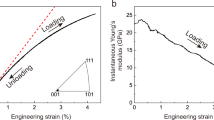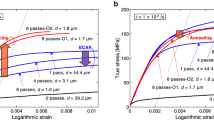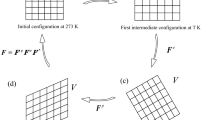Abstract
RECENT experiments1 on copper have shown that, following deformation at 78° K and recovery at room temperature, the number of defects produced per unit strain increase during subsequent deformation. Apparently, during the recovery, a defect-enhancing defect is formed, the exact nature of which is at present not clearly understood. Similar experiments on metals the recovery spectrum of which is such as to have defects other than point defects mobile at the recovery temperature and also the effect of changes of crystal structure on this phenomenon have not as yet been investigated. It is the purpose of this communication to describe results obtained on cadmium and to present reasons why cadmium behaves differently from copper.
This is a preview of subscription content, access via your institution
Access options
Subscribe to this journal
Receive 51 print issues and online access
$199.00 per year
only $3.90 per issue
Buy this article
- Purchase on Springer Link
- Instant access to full article PDF
Prices may be subject to local taxes which are calculated during checkout
Similar content being viewed by others
References
Peiffer, H. R., J. App. Phys., 34, 298 (1963).
Author information
Authors and Affiliations
Rights and permissions
About this article
Cite this article
PEIFFER, H. Effect of Deformation and Recovery on the Subsequent Resistivity Increase in Cold-worked Cadmium. Nature 202, 1205–1206 (1964). https://doi.org/10.1038/2021205a0
Issue Date:
DOI: https://doi.org/10.1038/2021205a0
Comments
By submitting a comment you agree to abide by our Terms and Community Guidelines. If you find something abusive or that does not comply with our terms or guidelines please flag it as inappropriate.



